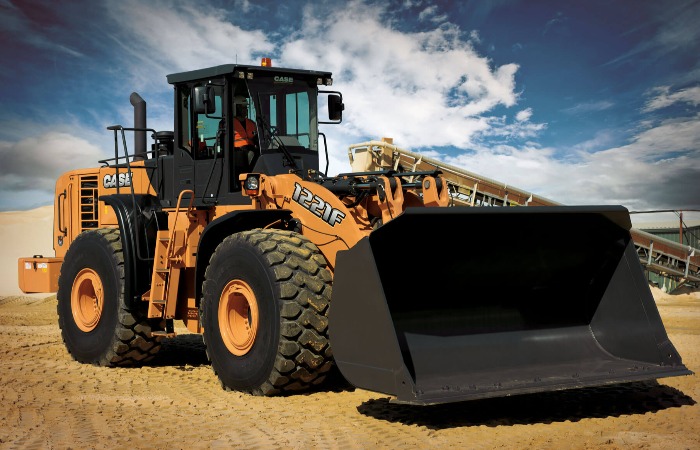
The Rise of Automation in CE Industry
The manufacturing business has undergone gradual change over the past several decades, and the construction equipment sector is no exception. Considering the increasing demand for equipment in infrastructure building, the lack of skilled labor has quite often been an obstacle impeding the growth of the industry. Leveraging automation and other technologies for the manufacturing process is an alternate solution that solves many problems in one go.
As Industry 4.0 is being integrated into the Indian construction sector, it has also influenced industry players in their outlook towards a conception of equipment, design, and functionalities as well as the manufacturing process. Integration of IoT and data analytics in equipment and the usual processes have helped make systems more efficient
and productive.
In recent years, the industry has embraced automation as a way to increase efficiency, reduce costs, and improve the quality of its products. Automating multiple aspects of the manufacturing process has helped manage rising demand, improved efficiency and saving costs. Welding, painting, and assembly are a few examples of monotonous, dangerous,
or highly precise operations that are now handled through robotics.
Additionally, to tackle the labour issue, manufacturers commission automated guided vehicles (AGVs) and mobile robots related to material handling and transportation, manufacturers. The application of computer-aided design (CAD) and computer-aided manufacturing (CAM) technologies is another method of implementing automation. These technologies enable the fabrication of automated components and 3D models of machinery, cutting the time and expense of generating parts and minimising mistakes.
The industry also increasingly utilising sensors and the Internet of Things (IoT). With the use of sensors, equipment performance may be tracked and problems or malfunctions can
be found, which enables proactive maintenance and helps decrease downtime. IoT technology can be used to connect machines and equipment, providing real-time data that can be used to optimize operations and improve efficiency.
At CASE Construction Equipment, the manufacturing, research and designing process are both aided by automation on various levels. Our Pithampur facility is designed with cutting-edge automation technologies to manufacture superior-quality products. The automation includes robotics welding which gives welding joints superior strength and robustness. This helps in the repeatability of the same welding, minimises human error and maintains consistency in quality. Our ultra-modern paint shop uses both Manual and Automated Paint operations providing aesthetically appealing products. It also boasts eco-friendly next-gen technology ensuring that the paint lasts longer. Additionally, we use automation in laser cutting, gas cutting, and in our machining centre.
The use of data analytics, artificial intelligence and machine learning further assists in the manufacturing of construction equipment. At a group level, CNH Industrial, our parent company has recently inaugurated the India Technology Center, specifically to use new tools for RD and collaboration with CNH global team. This includes tech tools like Cloud, VR, SW, Electrification, Autonomous, Advance Analysis, Simulation, Automation, and Mechanical & Electrical design, etc. Technologies such as these help in efficiency and dexterity in the industry.
For optimal efficiency and user-friendliness, we strive to offer machines that are of the highest quality possible. We constantly upgrade the technology in our user-friendly, fully-equipped devices to reduce downtime for our clients. We are advancing the industry 4.0 strategy, which unquestionably aids in the expansion of our brand.
Manufacturing is just one process that automation has enhanced for the construction equipment industry. More importantly, the product themselves are going through a transition of becoming increasingly automated. These machines have the ability to function remotely and autonomously, made feasible by the incorporation of cutting-edge communication and artificial intelligence technology within them. Cranes, excavators, and trucks”which are widely used for numerous construction activities”can all be equipped with automated technology. The remotely operated function of automated construction equipment may keep workers safe in dangerous work conditions.
The demand for automated construction equipment is being fueled by the accessibility of numerous automation technologies. It is also bolstered due to the fact that automation also increases equipment efficiency and removes the need for human involvement during operation, lowering the overall cost of the construction project. It is anticipated that this will increase demand for automated construction equipment over currently available equipment.
In India, we are already seeing the integration of automated technologies like Telematics and IoT in construction equipment to give customers real-time data about the performance and operation of their equipment. Telematics in construction equipment involves the use of sensors, GPS tracking, and other technologies to monitor and transmit real-time data about equipment performance, location, and usage. Sensors gather this information, which is then sent across a wireless communication network to a central server. Software programmes are then used to evaluate the data in order to provide information about the fuel usage, maintenance requirements, and productivity of the equipment.
The benefits of telematics include improved equipment efficiency and productivity, reduced downtime, proactive maintenance, and optimised equipment utilisation.
As the industry progresses, it is expected to have increased integration of technology with wider integration of IoT, data analytics, and machine learning in the processes as well as equipment. This will significantly improve the safety, productivity, quality, and cost aspects of the industry.
The article is authored by Puneet Vidyarthi, who is Head of Marketing & Business Development - India & SAARC, at CASE Construction Equipment.
The article is authored by Puneet Vidyarthi, who is Head of Marketing & Business Development - India & SAARC, at CASE Construction Equipment.


 +91-22-24193000
+91-22-24193000 Subscriber@ASAPPinfoGlobal.com
Subscriber@ASAPPinfoGlobal.com